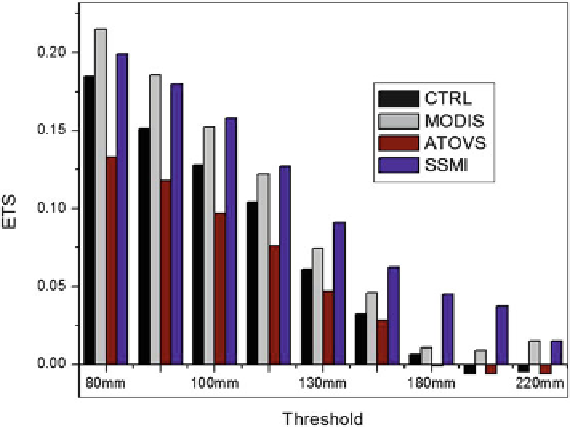Geoscience Reference
In-Depth Information
Fig. 26.25
Equitable threat score for 48-h accumulated precipitation for CTRL, ATOVS, SSM/I
and MODIS for 18-22 June 2007 depression
in the SSM/I experiment. The retrieved TPW observations contain valuable moisture
information and one would expect that the analyzed and forecasted vertical structure
of moisture would get improved by assimilating SSM/I TPW. Such assimilation of
TPW observations are also known to improve the initial temperature field and the
initial geopotential height field (
Lu et al. 2011
).
ETS and BS
The ETS and BS values with respect to the observed 48 h accumulated precipitation
from TRMM are shown in Figs.
26.25
and
26.26
respectively for the 18-22 June
2007 depression. The threshold values are set above 80 mm since the maximum
precipitation values exceed 250 mm over the Bay of Bengal. All the experiments
show higher skill score at the lower threshold values; however the skill score
decreases with the increase in the threshold values. The MODIS run shows the
highest skill score of all the four experiment at 80 and 90 mm threshold values.
The SSM/I run shows somewhat improved forecast skill at higher threshold values
while all the other experiments have failed to do so. The SSM/I and the ATOVS
experiments are clearly over-predicting precipitation which is evident from the
bias score values. The MODIS run shows almost the same areal frequency of
precipitation with respect to the TRMM observations at lower threshold values (refer
Fig.
26.26
); however the BS value, starts increasing at higher threshold values.

Search WWH ::

Custom Search